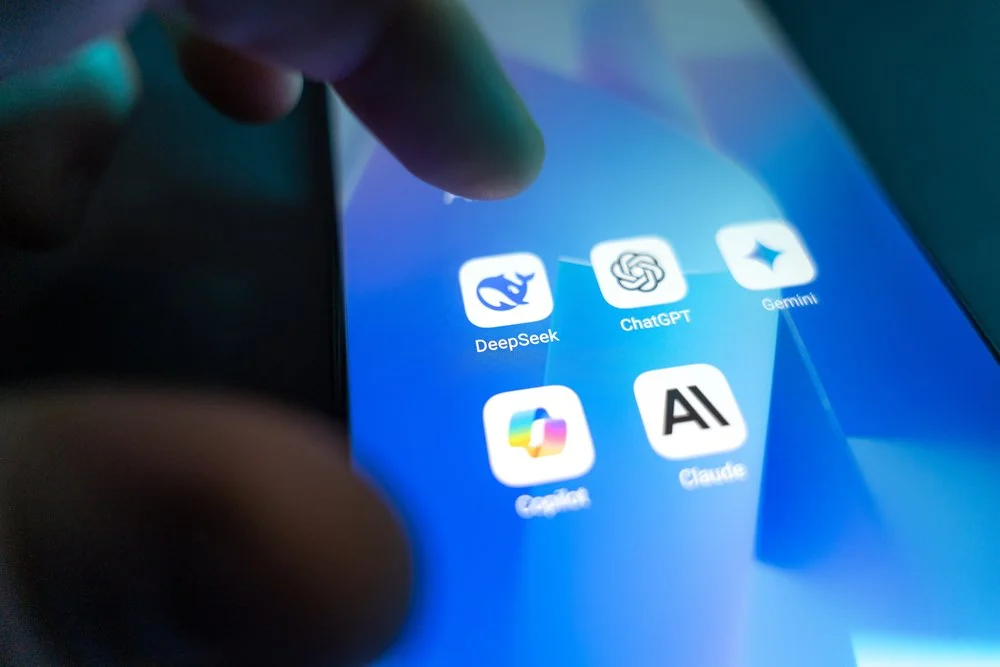Five reasons your website is still your best marketing tool
It seems like every nonprofit is asked to do more with less, year after year. With bad stereotypes out there around overhead expenses, the need to continue diversifying income streams, and running lean teams with sometimes few or no paid staff, marketing is often the first expense on the chopping block.
And now, here in 2022 with the Coronavirus Pandemic still impacting almost every facet of our lives, marketing is a messy topic. To market or not to market? To ask or not to ask? Move our events online? Cancel everything? Beg for money? No one knows the right way to approach all of this because guess what, no one has done this before. I fear many nonprofits are going to let their marketing plans fall by the wayside in search of quick results and that will, I’m afraid, turn out to be a terrible decision in the long run.
But, even if your nonprofit is planning to slash the marketing budget and cut back, your websites should remain in place and active (pay those renewals, no matter what!). And lucky for you, your biggest (and best) marketing asset is versatile and online, which is where everyone else is, too.
There are probably many more reasons I could add to this list but for now, here are five reasons your website is still your best marketing tool.
1: You can update the content as much as needed and adapt quickly as things change.
Have you ever printed a brochure or traditional marketing piece and immediately found a mistake? With your website, you can update your content as often as needed so your visitors can find what they need, find something useful they didn’t know they needed, and send a big signal to Google that your website is the best place for people to find information on your topic or service area.
The COVID-19 crisis is a perfect example of how your website can help you adapt and pivot when things change daily. No one is out printing brochures right now about their Coronavirus response (at least I hope they’re not). But before you go adding a ton of new information about the current situation, you need to make sure the standard content is on target and serving your audience.
Take a look at your homepage with a fresh perspective. One of the biggest mistakes I see nonprofits make is focusing their website on what they do instead of why they do it.
For example, if your website tells me that you provide after-school care for kids, great. That’s nice. But if your website tells me that you give kids a safe place to do homework, have a snack, and make friends instead of going home to an empty house….now that’s an impact.
When we figure out how to talk about the why in our marketing messages, we naturally segue into talking about our impact instead of our programs and services, resulting in less confusion for those not in the trenches with us day to day.
To make your website the most effective marketing tool you have, showcase your impact through strategic wording and evidence, emotion-invoking photos, video, and testimonials (or social proof).
So what does showcasing our impact look like? Here are a few examples of what you could include on your website to better demonstrate your impact:
✅ Share impactful data (evidence) and include the people behind the numbers with strategic content. People aren’t motivated by stand-alone numbers or numbers they can’t relate to. But the combination of relevant data plus stories is magical. Give your audience a few interesting pieces of data about what you’ve accomplished and then provide a story that goes along with each data point.
✅ Use emotion-invoking photos and meaningful captions to highlight impactful moments. Great photos that evoke emotion are key to keeping your website visitor reading. But photos by themselves aren’t much help. Ensure each photo has a meaningful caption and demonstrates a key component of your program.
If you don’t have great photos to use, be sure to read this post about how to use stock photography well and check out the Styled Stock Society Membership for access to unlimited stock photos.
✅ Make a video of your program in action. When you can demonstrate your program in action, you help the reader visualize how their support will be used. If you include a video on your website:
Be sure it’s great quality and looks great on both desktop and mobile screens
Caption the video if at all possible. Most people who watch a video (at least on a smartphone) do not use sound. YouTube offers a free service to caption your video once it’s uploaded!
Consider putting your video on YouTube where you can capitalize on the SEO with a great video description and link back to your website donation page.
You'll probably need a video editor to put all this together, and I recommend trying the free version of Movavi
✅ Share testimonials and offer social proof. We can tell potential donors over and over again how great our programs are but when they hear it from those who are actually benefitting, it takes it to a whole other level. Be intentional about asking for testimonials whenever you can. Add a form to your website where you can collect them easily. (There are several Squarespace 7.1 tutorials on working with forms over in the Squarespace Essentials course.)
Testimonials can be from different points of view and it’s okay to change names, where needed. Ask your clients, volunteers, family members of those you serve, and even collaborators to share the impact your nonprofit has on the greater community you serve. Spread those testimonials throughout your website and be sure to add the best one on your donate page!
Once you have really great content on your website that works for any situation, you can start to adapt and update the content based on what’s changing for your organization during this time by adding announcements, new blog post updates, or pop-ups that alert visitors to the changes.
2: You can bring your traditional marketing materials (and message) online and carry your audience from one platform to the next.
When we coordinate between channels with one specific message, a unified goal, and cohesive branding to pull it all together, our constituents will take notice and we’ll start to set ourselves apart from the crowd. Remember, we’re not just asking for money all the time — we’re asking for someone to come alongside us and help us solve a problem.
✅Make a list of all the current marketing materials you use that are not online. This could be brochures, annual reports, newsletters, etc. This should also include events you host or produce.
✅Now, how can you incorporate those (or some part of them) into your website?
Can you use the text from your brochure to update your website?
Can you post the annual report on your website and write a few short paragraphs that talk about the highlights of the report?
Can you turn your print newsletters into blog posts?
What parts of your event can you bring online? Can you add online registration? Can you post an event recap on your website? Can you collect emails at the event and send a link to the recap page after the event?
This is the easiest way to create website content - simply reuse what you have already done and adapt it to fit the online space! Don’t forget to provide users with a great online experience by uploading documents in a PDF for easy viewing. And, use as much actual text on the website as you can (versus posting a link to the document or a photo of something) so Google can read all those keywords!
3: You can leverage your social media outreach to move followers from social media to your website (and fix the relationship once and for all).
I bet you didn’t know you were going to get relationship advice here, huh? This is one of the questions I get asked the most -- should we put our social media feeds on our website?
My answer: Social media feeds? No. Social media links? Yes.
Right now, social media is crowded. I’ve never seen this much content from people. It’s great that we have these tools when information is king but it also gets really hard to get your own message across when you’re competing with everyone else.
In digital marketing, the goal of our social media accounts is typically very different than the goal of our website. We want our social media channels to help us spread awareness of our nonprofits, to recognize key players in our success (volunteers, donors, staff, etc.) and to have a two-way conversation with our people. That’s why we hear so much about social media engagement -- it’s not designed to be a one-way conversation. I also see nonprofits getting caught up in the “like and follow” game where they put a big emphasis on how many likes their page has. And while yes, more likes can mean more people see our message (algorithms be damned), those likes do not necessarily translate into results for our nonprofit. We don’t know for sure that those likes are from people most likely to help us with time or money.
But with our websites, the goal is very different. This is where we want our audience to do something that moves our mission forward. We want them to donate. We want them to sign up to volunteer. We want them to commit to something. So if we’re using our precious website real estate to show them a social media feed and distract them from the reason they came to the site in the first place, we’re not making any progress toward our goal.
The idea here is to use our social media to drive people to our website. Once they are there, we can give them even more great information. Continue a story we started on a Facebook post, lead them to an event registration page we posted on Twitter, or help them get directly to our online giving page where they can donate securely (and through our own platform).
Don’t forget to consider how those links you post on social media appear! You can read this post about social media link previews to help.
4: You can use analytics to better understand your audience and give them more of what they want.
If you have ever advertised on a billboard, radio, or television, you know it’s really hard to track the return on that investment. Sure, the company can give you some demographic information about viewers, traffic, and what they think people are watching and listening to but it’s pretty difficult to know for sure. With social media, we can get really quick statistics on how many saw our posts, who reacted, who followed a link, etc., and switch gears pretty fast.
But with our website, we hit the jackpot in terms of having solid data to better understand our audience, what they want, and what they’re doing once they land on our website. For example, I can tell you that the majority of my website traffic right now comes into my Blog or Nonprofit Template Shop pages, clicks on an average of 2.5 links, and then checks out my About page.
What do I do with that information? I make sure my most important information for new visitors is on both of those pages. There’s no sense for me to be spending hours updating my services page when those get very little action most of the time. I’m using hard data to make business decisions that impact my bottom line.
Nonprofits need to be doing the same thing. Google Analytics is free (watch my tutorial video for how to set it up on your site) so there’s no reason not to use it. While the dashboard can be a little daunting at first, it’s important to focus on the following metrics and insights regardless of your overall website goals:
✅Conversion rates -- how many people perform the action you want them to compared to your total number of unique visitors. For example, if your primary goal on your website is to raise more money via online gifts, your conversion rate will track online donations vs. unique visitors.
✅Unique visitors -- how many unique visitors do you have for a specific time period.
✅Time spent on site -- one of the big factors Google uses to decide where you land on the search results page is how long visitors have spent on your website. When this number steadily increases, Google knows your visitors are finding valuable content from you and answers to their questions.
If your website objectives center around raising more money via online donations, other metrics to measure might include:
Increase referral traffic
Decrease bounce rates
Increase email subscribers
Achieve higher SEO rankings for your top keywords
If your website objectives center around building credibility, awareness of your programs, increasing efficiencies, or simply providing information, other metrics to measure might include:
Growing traffic to your blog
Increasing the number of backlinks to your website
Increasing the time spent on your site
Setting goals and tracking your progress doesn't have to be difficult or scary - it just has to be intentional. And, you have to start in the right place, which means having the right goals from the very beginning.
You can use my free goal-setting guide to get you started or Click here to learn more about working with a design agency on this work.
Four questions to ask before you set your goals
How to choose specific goals
Important terms to know
Setting your first goals and planning how to measure them
Before you know it, you'll be on pace to blowing those goals away and setting new ones! Best of all, you'll be maximizing your reach and impact and sharing what you do with those who need it most.
5: You can use your website to grow your email list and benefit from more targeted outreach.
Email has been around since the early to mid-90s and although we’ve come a long way since that “you’ve got mail” time period, email remains one of the primary ways we communicate every single day.
Did you know?
99% of us check email every day
Emails reach most of the people they’re intended for (unlike many other tools we have available to use)
ROI of email marketing is 28.5% better than direct mail
But, it’s not all great news! 53% of consumers say they get too many irrelevant emails from brands. And, our email platforms make it easy to get rid of emails fast (swipe to delete, unsubscribe, report as spam, etc.)
So how do we get more emails to take advantage of this marketing tool? We use our website to build the case as to why someone should trust us enough to let us in their inbox. And this goes beyond asking people to subscribe to our newsletter (which is very ineffective, by the way). We need to give them a reason to subscribe -- what will we deliver that’s of value to them?
One way is to create something free you can give away in exchange for their email address. This is easier for businesses (hello promo codes and free shipping offers) but it’s not impossible for nonprofits. Or, you can use your opt-in form to make the case as to why someone should trust you and subscribe.
Many nonprofits hold back on using email because they don’t think their list is big enough to matter. I wholeheartedly disagree. It’s better to have a smaller email list full of people who want to hear from you regularly than a big list of people who are not engaged and have no intention of supporting your organization. Plus, I bet if you start with adding your board members, regular volunteers, staff, corporate partners, etc. you have a pretty decent list already (be sure to always ask permission before adding someone to your list).
Once you have a solid email list (remember, small is fine), you’ll need to
✅Understand and plan for how emails fit into your overall marketing strategy
✅Carefully plan your email messages and schedule them to stay consistent
✅Decide which metrics matter and measure them regularly
And keep in mind, an unsubscribe is not the worst thing in the world. If someone unsubscribes, don’t sweat it. I get a few unsubscribed every time I send an email update, and it’s fine. It just means I’m not right for them and they are probably not right for me.
My biggest advice to nonprofits is to take the long-view - always. Your community needs you and the work you do, and if you panic and make rash decisions, you’re likely to jeopardize your sustainability. Do what you know how to do. Reach out personally to your loyal donors and have conversations about what you need and how they can help. Be strategic about what you do now - not everything that was canceled has to be replaced. And of course, use that beautiful website of yours to keep sharing the incredible work you’re doing.
Until next time, keep making a great first impression online,
Andrea
Related Posts:





